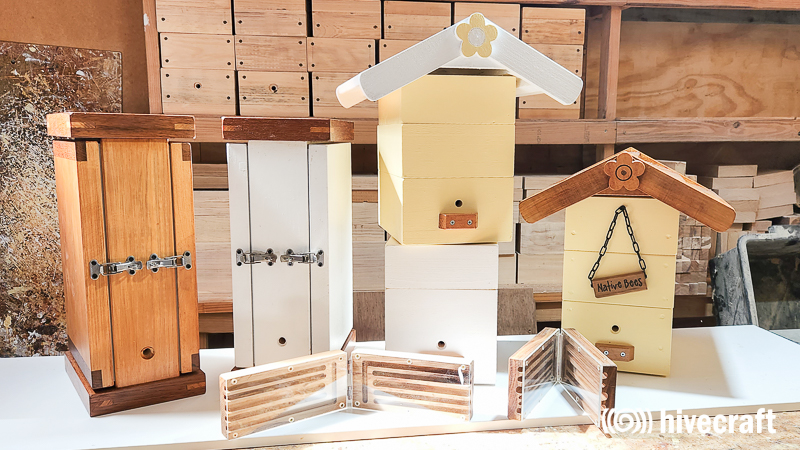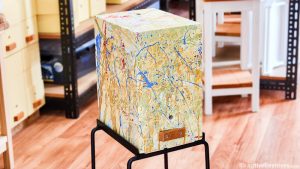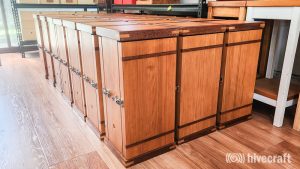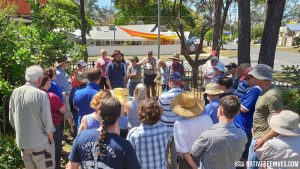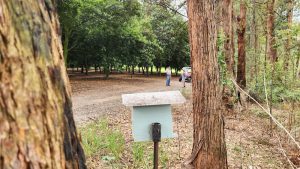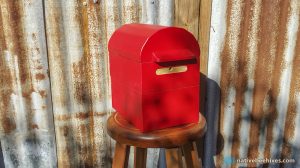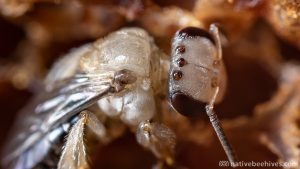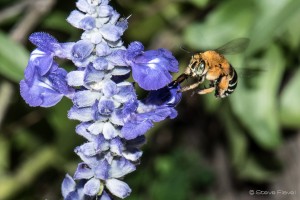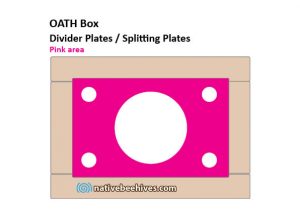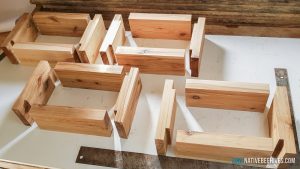There’s a lot of theories and personal opinion around Stingless Bee Box designs, here I give some thoughts on Splitting Bars and a Plates.
Some people prefer the full dividing plates but i’m undecided because i think there’s positives and negatives with each system so i can’t see one way as any better than the other.
Note: If you only do Budding / Eductions then you don’t even need split bars or plates. The bees will be fine in an empty box.
Splitting Bars
Splitting Bars are strips of timber, steel or plastic that are attached to the underside of the middle brood box. These are in place to support the top section of the colony in the period after the hive split. Some people even use masking tape, so it’s not long before the bees chew through the tape and it’s gone, which is fine because the bars are not needed once the colony rebuild their supporting structures.
Below: This a fairly standard style of brood support bars used in the industry. This frame is upsidedown just to show the split bars
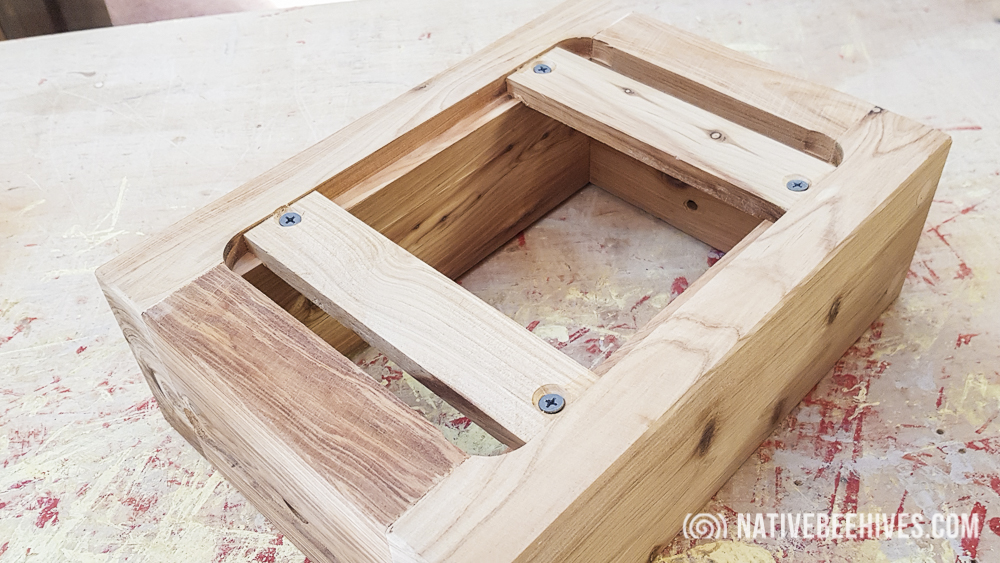
Splitting Bars are a simple design and easy to produce for the box maker. These can be glued and screwed or nailed in place. When splitting your colony you will cause some damage to the structures like Honey and Pollen Pots but this damage will be repaired within a couple of days. For the rest of the year the Splitter bars are not needed.
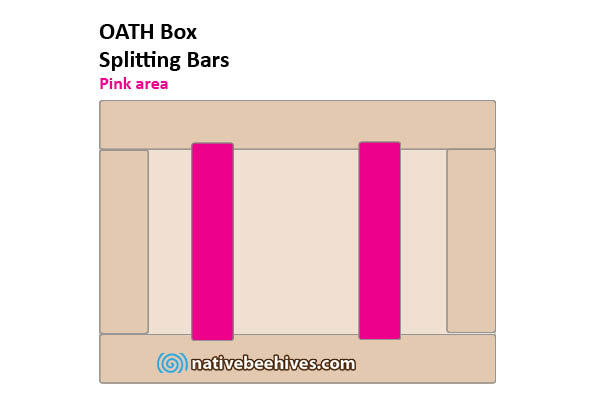
Dividing Plates
Dividing Plates, using steel, plastic or plywood are usually attached to the top of the base box and to the underside of the middle box, so when the boxes are together they sit against each other and all holes line up.
They do the same thing with supporting the top colony structure after the split, but also intended to make the splitting easier and reduce the damage caused by the splitting process.
Dividing Plates do take more time and resources to produce. When splitting a colony there is less damage caused to the Honey and Pollen Pots.
The dividing plates are installed to reduce damage during a split time only which is only for a few days, but for the rest of the year they could reduce airflow. Restricting airflow could lead to excess heat and moisture.
Some dividing plates are flush against each other with no gap, while some dividing plate designs have a 5mm gap between them so they are separated.
If you have the dividing plates inset, so there’s a gap between them, It’s best to glue and screw the plates to the frames so they stay separated with the small gap between the plates..
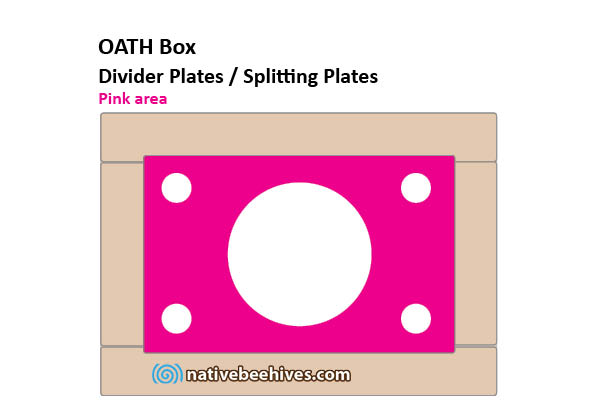
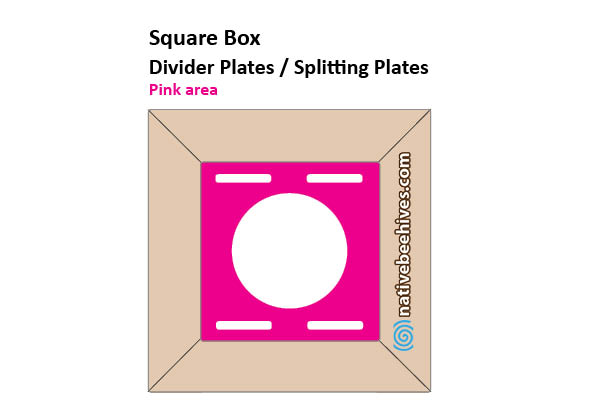
Sealing of gaps
Sealing of the colony is important to Native Bees. It provides security from pests, rain and also insulation.
Using the blue lines, the below images show where the bees would seal off the gaps between the bottom box and the middle box. To me, it doesn’t show either method is better than the other one when it comes to sealing the box.
Below: With a small gap between the plates, the bees can access the small area and seal the frames together

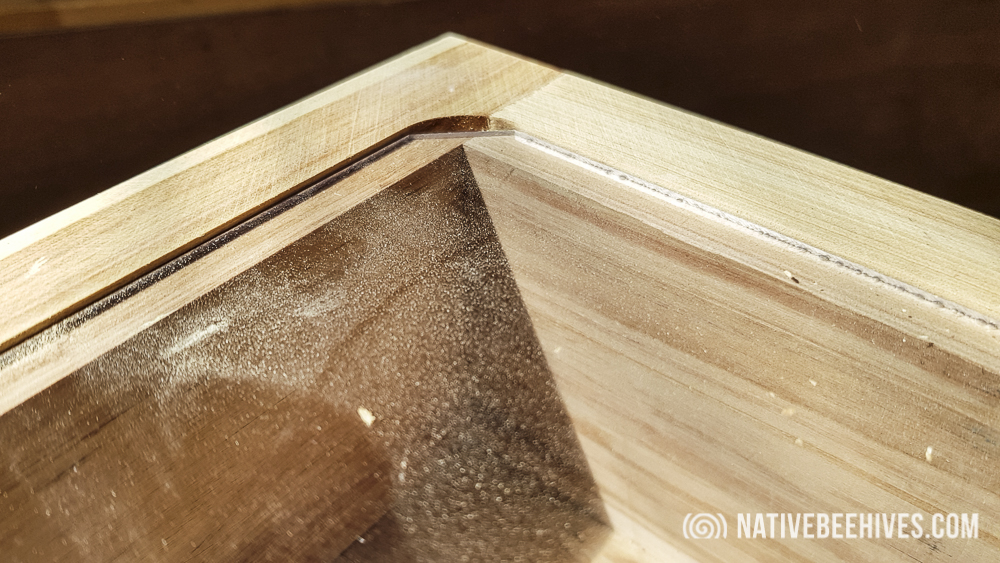
Below: If there’s no gap and the two plates rest against each other
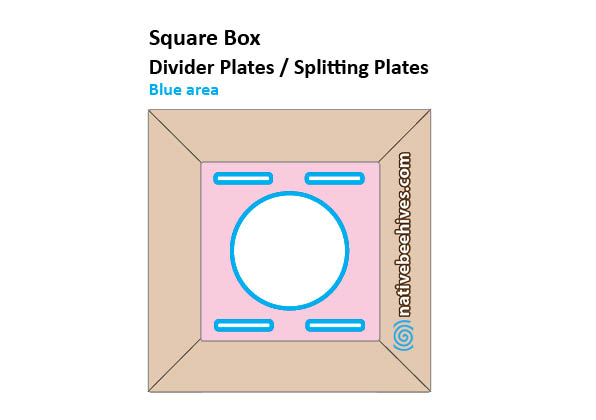
Below: This shows splitting plates between the frames. You can have these plates left loose or fixed to the frame. If they’re left loose the bees will glue them all together anyway. It’s possible these plywood plates could draw water in from the outside as they’re exposed.

Below: Splitting bars, the bees have open access to seal the wood frames together

Below: If there’s no gap and the two plates rest against each other

Below: This is one design I’ve used. It’s combining the idea of splitting bars with dividing plates. When the boxes are together there’s a small gap between the bars.
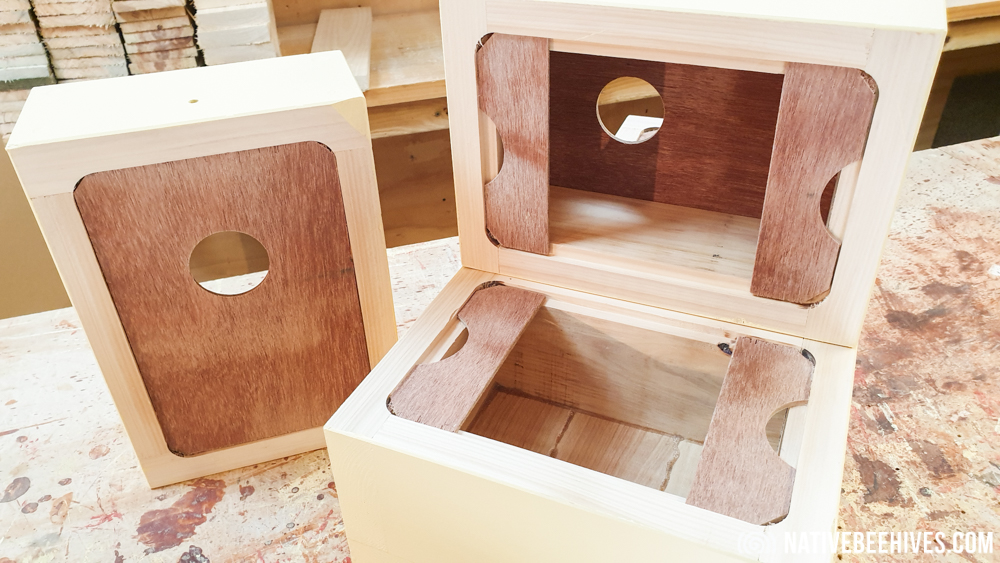
These are theories, as all box designs are based on theories and personal opinion. There’s no right or wrong way to do it and i don’t consider any method wrong. These ideas simply give thoughts about different designs and box makers should develop their own opinions. (that’s my disclaimer!)
I’ll add more info to this article over time. Send me an email if you have any thoughts on the subject.
